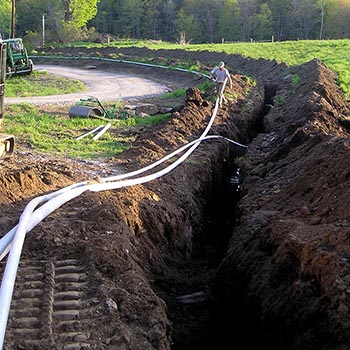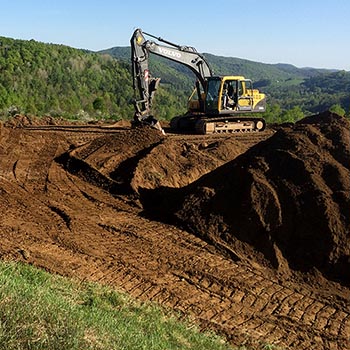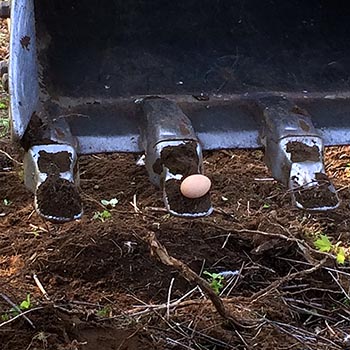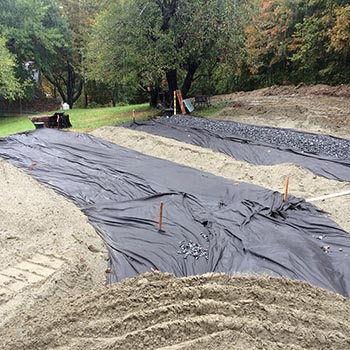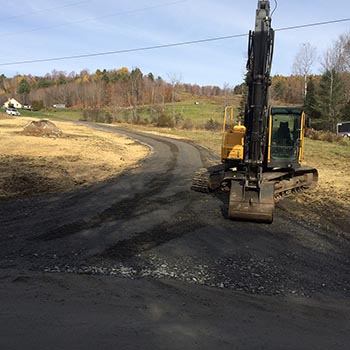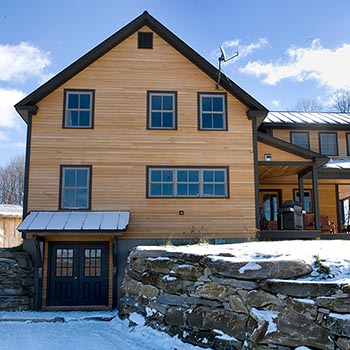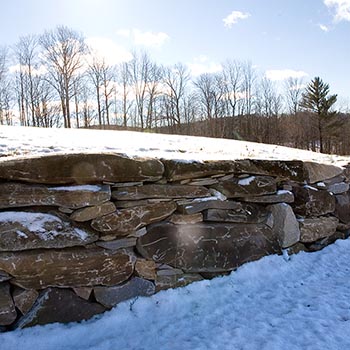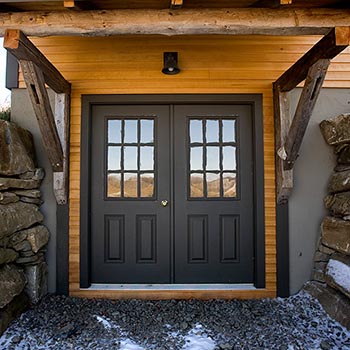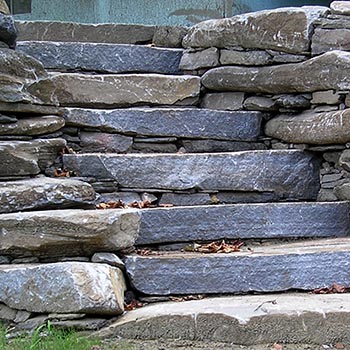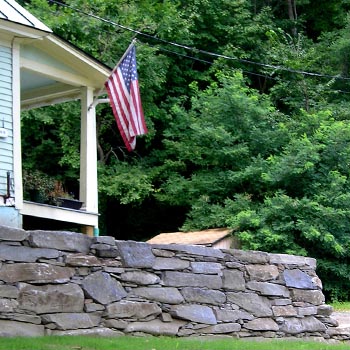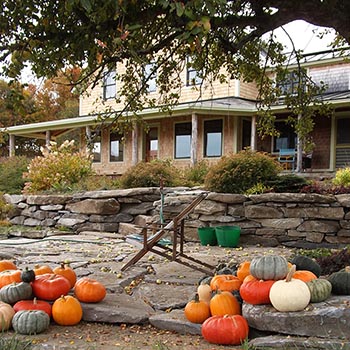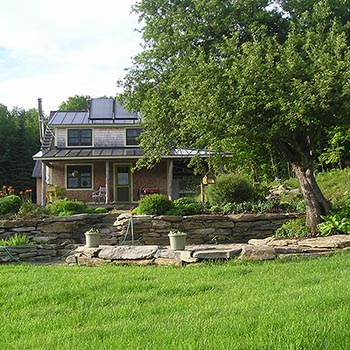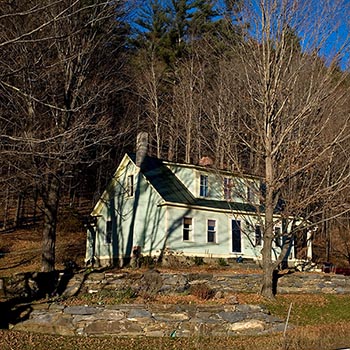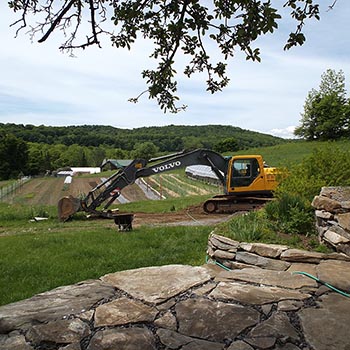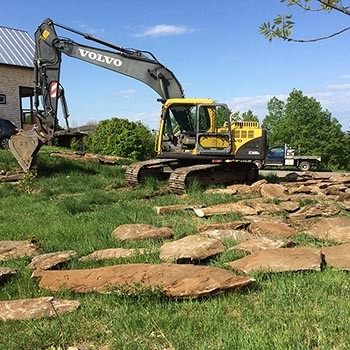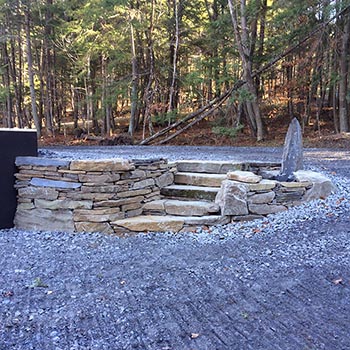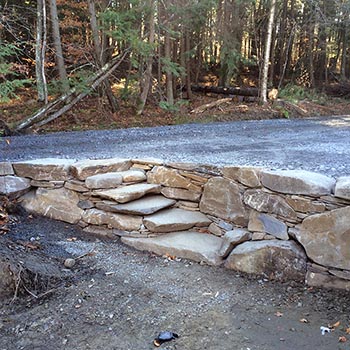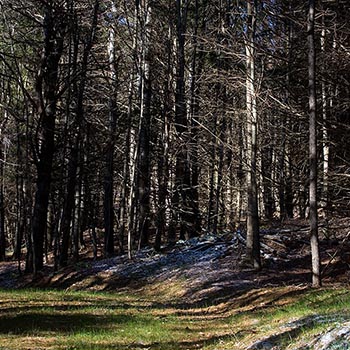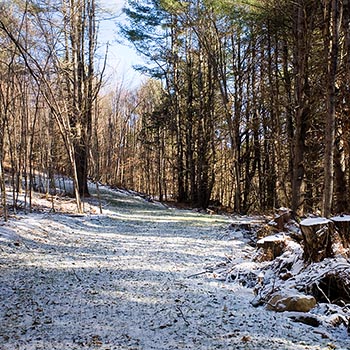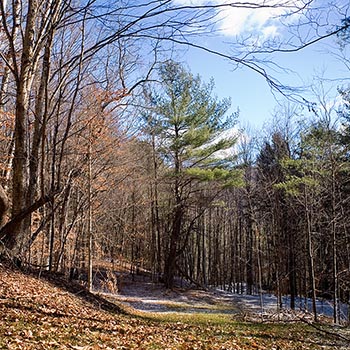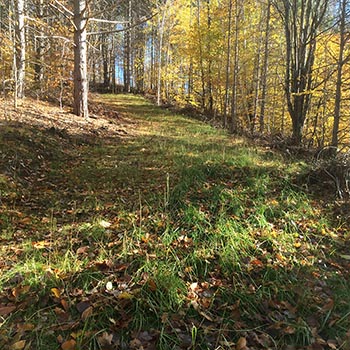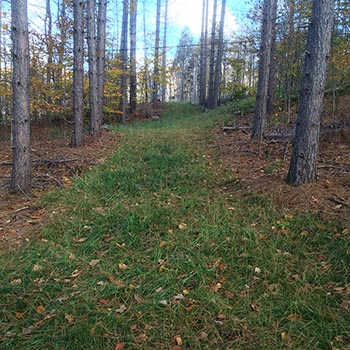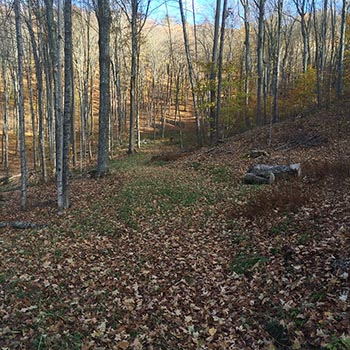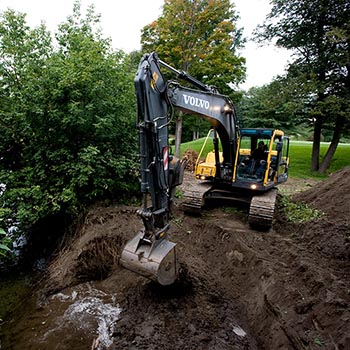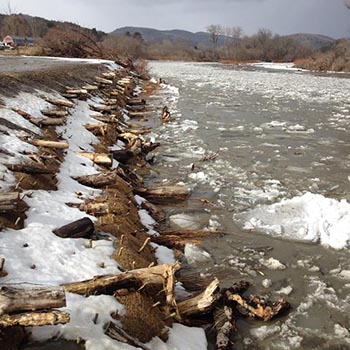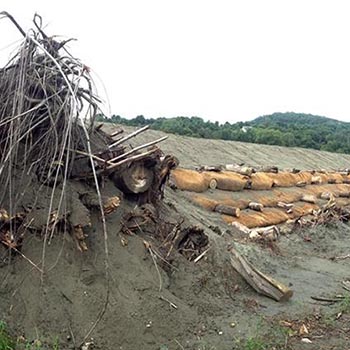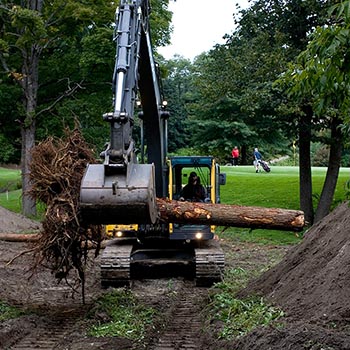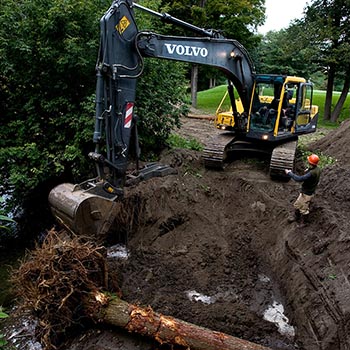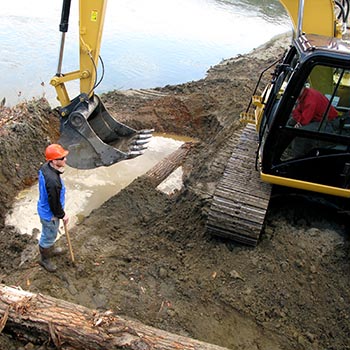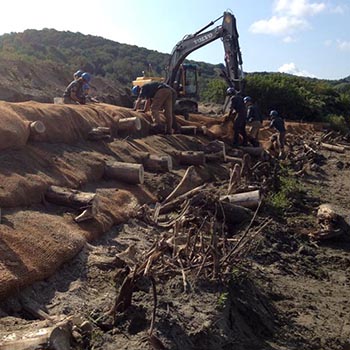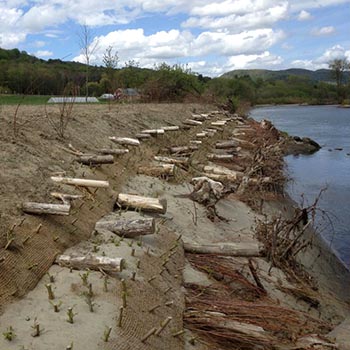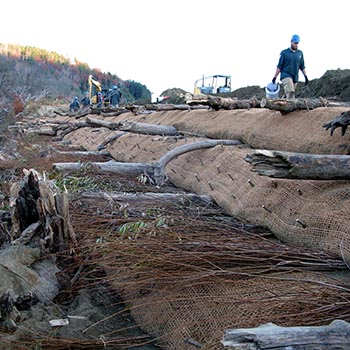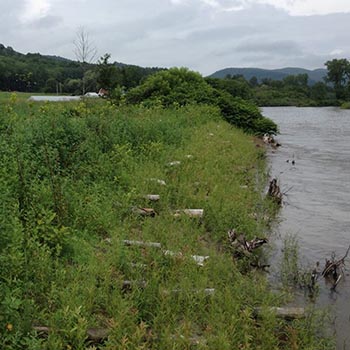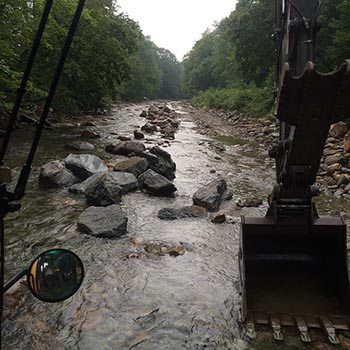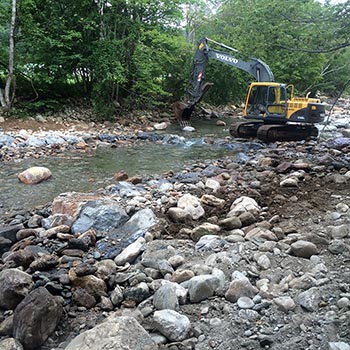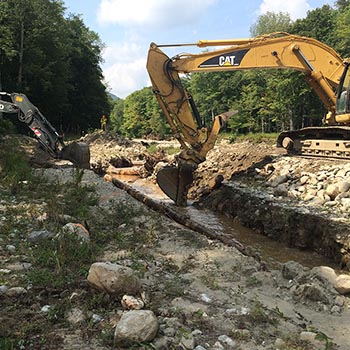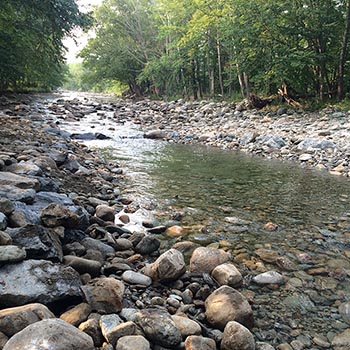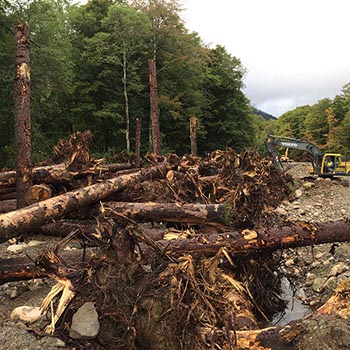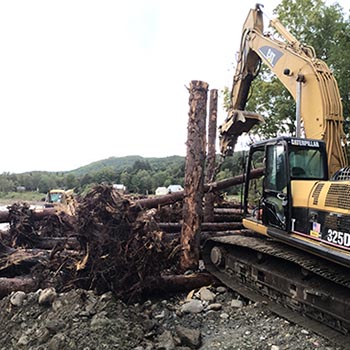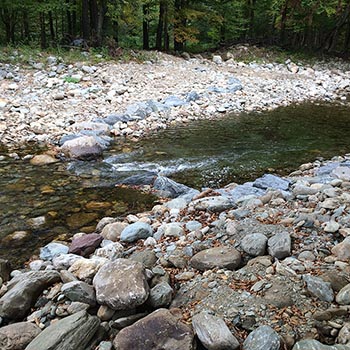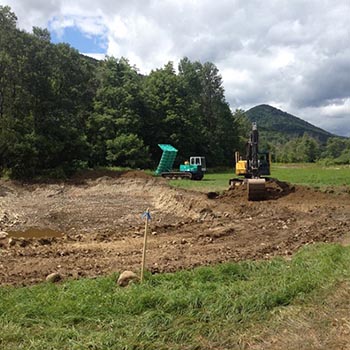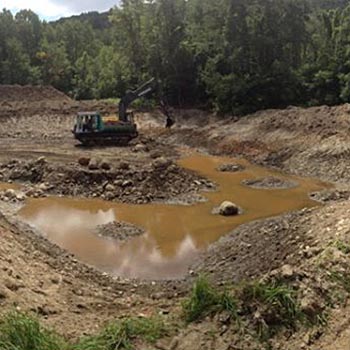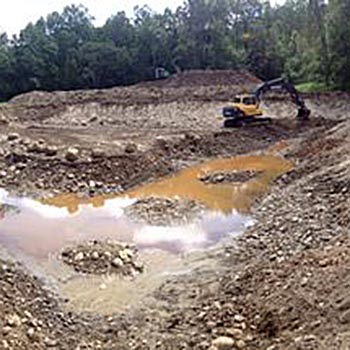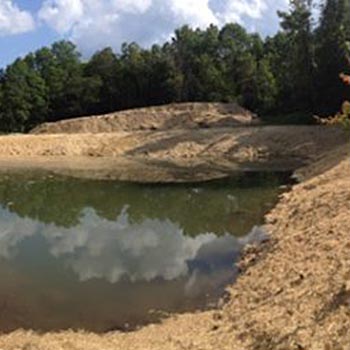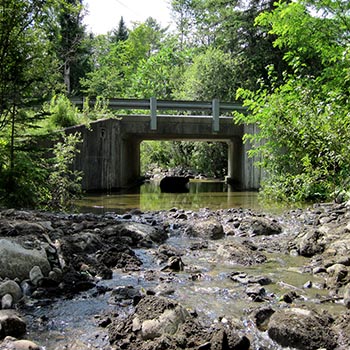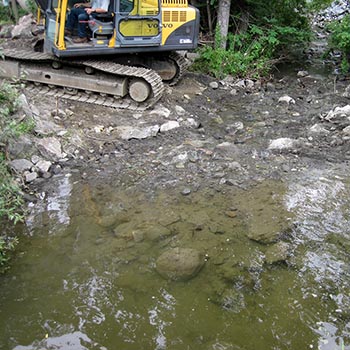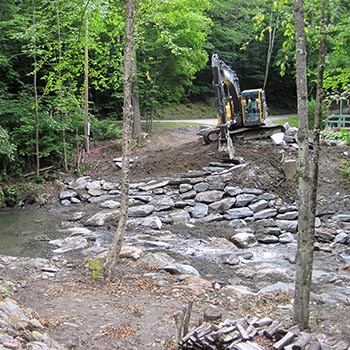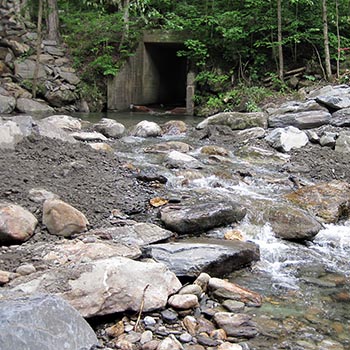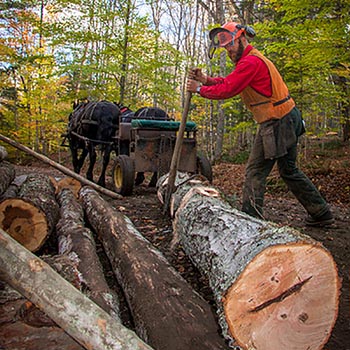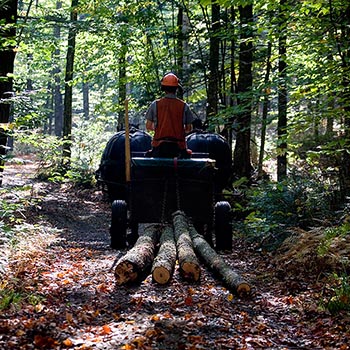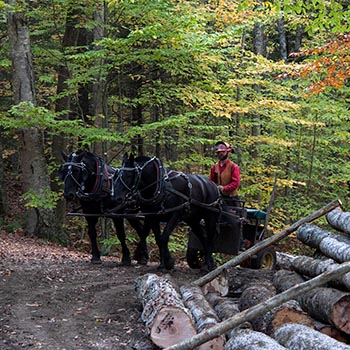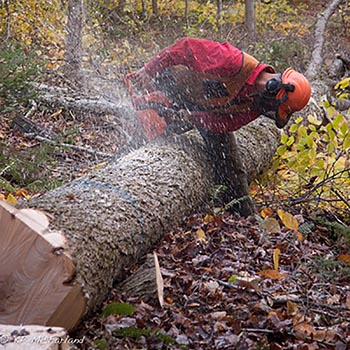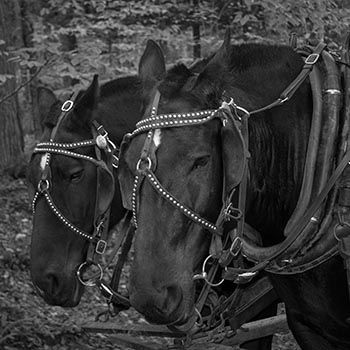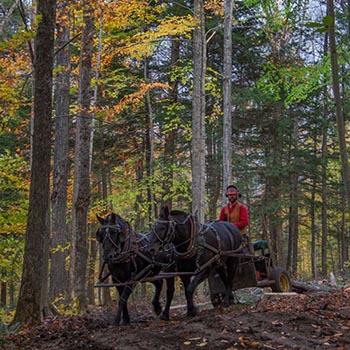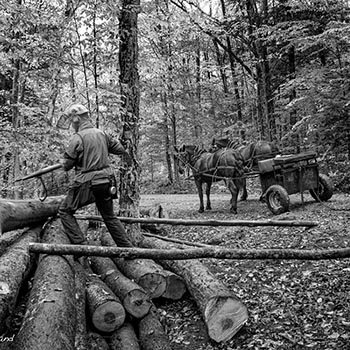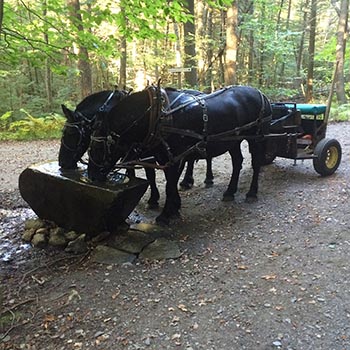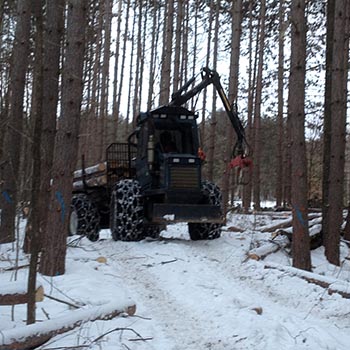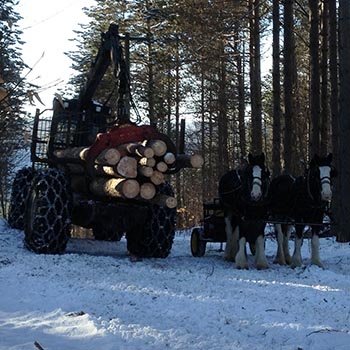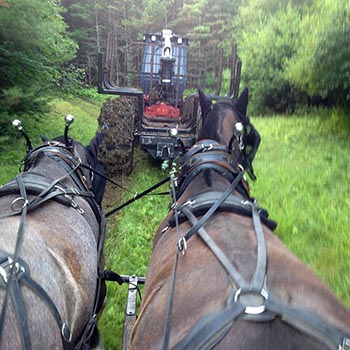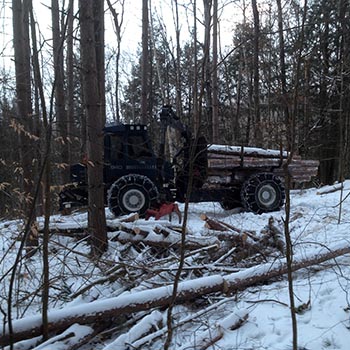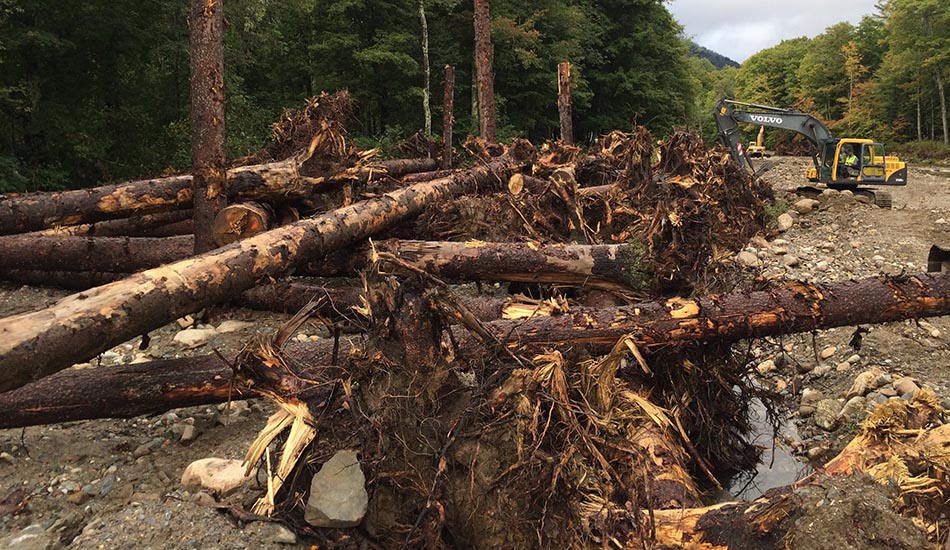
Working on the final touches of an engineered log jam on the West Branch of the White River in Rochester, VT.
Canonica Landworks, Inc. provides a wide range of excavation and logging services, specializing in river restoration and hybrid horse logging. Below are the various facets of our business – please choose an enterprise heading to view a description and slideshow (click on a photo to enlarge and read the caption).
We have the skills, tools and experience to undertake all aspects of site development. We can work with clients to help them create or refine their vision for the project, as well as working with engineers from their plans. Canonica Landworks is equipped to take projects from conception to completion, including; clearing and stumping, road and driveway construction, cellar holes, septic systems, retaining walls and patios, utility installation, and final grading and seeding.
Canonica Landworks works with our clients to create a vision for their specific site. We are able to create a working design as well as constructing off of a pre-existing plan. The materials we work with are often sourced onsite, but we are also able to purchase the necessary materials if the need arises. Many of our projects contain an element of stone, from patios and retaining walls to rip rap and in-stream riffles.
We take great pleasure in helping landowners create and improve access to their land. Whether the use is recreation, wildlife viewing, or to help implement forest management activities, a well built and maintained trail network helps to improve the long term value of a parcel. All aspects of trail construction from design to final seeding, are done in house.
Since Tropical Storm Irene rolled through Vermont, we have worked with numerous landowners, river conservancy groups, and state and federal agencies in VT & NH to restore problem areas throughout our waterways. The majority of these projects have used bioengineering techniques, incorporating rootwads and logs into the structure of the design and using natural fabrics and plantings to provide intermediate and longterm holding power.
The projects we have completed cover a broad spectrum, including; riverbank stabilization, wetland construction, channel roughness and grading, rock weirs and veins, as well as culvert retrofits.
We realize the sensitive nature of the sites we work in and the catastrophic impacts that would result in a hydraulic leak from our machines. For this reason, we have chosen to run biodegradable hydraulic fluid in our excavator in combination with using biodegradable grease.
Aquatic Organism Passage projects have been gaining traction in our local watersheds. They typically involve the removal of a manmade feature in a waterway that blocks certain organisms from traveling up or downstream at particular times of the year. A couple of examples of such barriers are; perched culverts, where the outlet of a culvert is too high above the natural water level to allow easy passage during low flow; and old-defunct dams, which are no longer serving their original purpose and creating a barrier for aquatic organisms to freely move throughout the waterway.
Flood resiliency efforts have also been incorporated into the design of numerous projects and dovetail nicely with an effort to improve riparian habitat. Floodplain wetlands achieve both of these objectives, as well as many others.
The winter months find us transitioning from our river related projects into local woodlots, where we provide our low impact, hybrid horse logging services. This term describes the collection of tools we choose to use to perform surgical harvests. As site conditions change from one stand to another, and throughout the seasons, we are equipped with the necessary tools to perform a wide range of tasks.
All of our wood is hand cut, and then typically pre-bunched with the horses or the dozer to the trailside. From there it is loaded onto the forwarder and transported to the roadside landing, where it will be neatly stacked and wait until it is picked up by the log truck. By using the horses in conjunction with the equipment, we are able to work on larger parcels that may have long skid distances, making it challenging to solely rely on animal power. The forwarder typically remains on the main trails, while the horses and dozer are used to do the tight work of bunching the logs to the trailside. The use of the forwarder allows us to keep very small and tidy landings, in some locations we can stack the logs right alongside town roads. This system also ensures that pieces of unmarketable wood remain in the woods to return to the soil, instead of ending up on the landing to become an eyesore.
Our hands-on experience is backed by the completion of the Game Of Logging courses. This is a series of workshops teaching the safe and efficient operation of chainsaws in a production-oriented setting. Along with an emphasis on a safe working environment, the use of directional felling not only facilitates the efficient extraction of timber, but also helps to keep residual stand damage to a minimum. This is where the value of our workmanship is truly measured, not only by the log pile, but by the residual stand.
In conjunction with maintaining our equipment to a high standard, we choose to use biodegradable grease and bar & chain oil.

